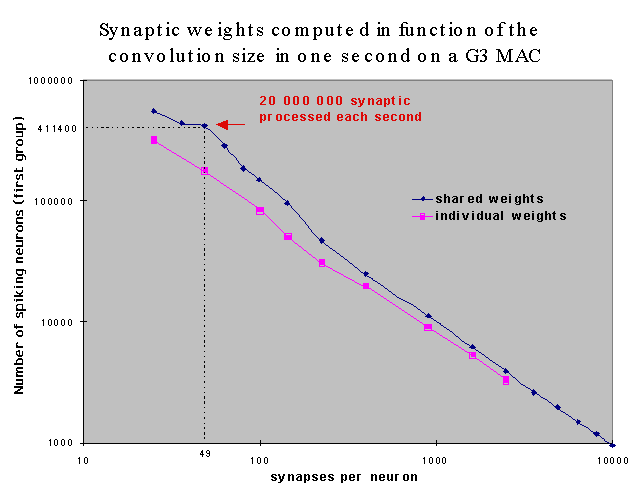SpikeNET is a program designed for simulating very large networks of asynchronous spiking neurons. Neurons are simulated with a limited number of parameters that includes classic properties like the post-synaptic potential and threshold, but also more novel features like dendritic sensitivity. SpikeNET can be used to simulate networks with millions of neurons and hundreds of millions of synaptic weights. Optimization of computation time and the aim of real time computation has been one of the driving forces behind the development of SpikeNET.
When we tested rigorously the performaces of SpikeNET in 1999, SpikeNET could compute roughly 20 million connections per second on a standard deckstop computer (Macintosh Power PC 233 Mhz). As shown in the next figure, this is sufficient to model a network of 400 000 neurons in real time, using a time step of 1 ms (assuming 49 connections per neuron, and an average firing rate of 1 spike per second, a value which is a reasonable estimate for the average firing rate of cortical neurons). Note that time resolution increses has virtually no effect on the computation time, and that adding a decay parameter to neurons adds roughly 30-40% to the computation time. Because of the type of processing performed by SpikeNET, we would expect this figures to scale with the processing power of new deckstop computers: for a Pentium 4 at 2 GHz for instance, the Software may be able to update about 100-200 million connections per second. You may find more detailed specification of this model in the paper section .

| Number of synapses updated per second by SpikeNET as a function of the number of neurons and the number of input synapses per neuron. Shared and individual weights indicate weither some neurons share same sets of synaptic weights (which help saving memory). Note that a type of membrane potential desensitization also is included in this model. |